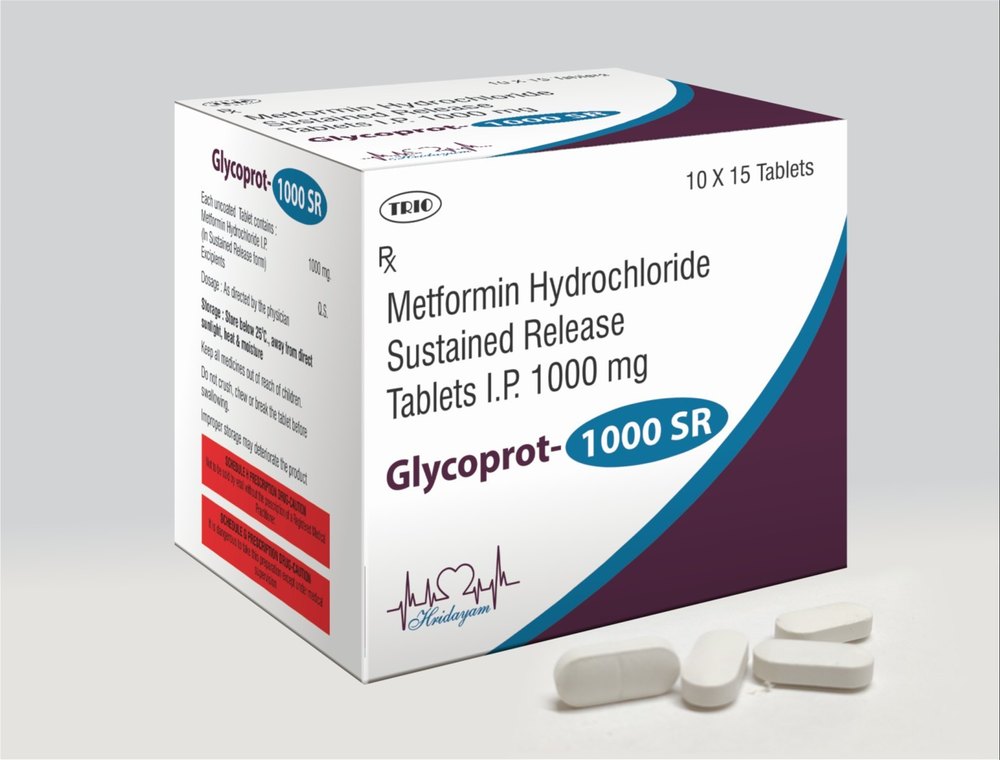🔹 Metformin Tablet 1000 mg – As Licensed
📄 **Description:
Metformin** 1000 mg is a high-dose oral antidiabetic medication from the biguanide class, used in the treatment of Type 2 Diabetes Mellitus. It works by reducing hepatic glucose production, enhancing insulin sensitivity, and increasing glucose uptake by peripheral tissues.
💊 Prescription / Use:
- Indications:
- Type 2 Diabetes Mellitus, especially in overweight or obese patients
- Used as monotherapy or in combination therapy with other oral antidiabetics or insulin
- Dosage:
- Often used in patients already stabilized on lower doses (e.g., 500 mg BID)
- Can be given as:
- 1000 mg once daily
- Or 500 mg twice daily
- Or 1000 mg twice daily (with medical supervision)
- Must be taken with or after meals to reduce gastrointestinal side effects
🔬 Nature:
- Type: Biguanide oral hypoglycemic agent
- Form: White or off-white film-coated tablets
- Mechanism:
- Inhibits liver glucose production (gluconeogenesis)
- Increases insulin sensitivity in muscles
- Slows intestinal glucose absorption
- Does not cause hypoglycemia when used alone
🌟 Advantages:
- Effective glucose lowering
- No weight gain (may aid in weight loss)
- No hypoglycemia risk as monotherapy
- Improves lipid profile
- Reduces HbA1c by 1–2%
- Low cost and well-established safety profile
📦 Common Packaging:
- Strip packs (10 or 15 tablets per strip)
- Bulk bottles in hospital settings
- Label includes:
- “Metformin 1000 mg”
- Batch number, manufacturing & expiry date
🧊 Storage:
- Store at below 25°C in a dry place
- Protect from moisture and light
- Keep in original container/packaging
- Keep out of reach of children
⚠️ Precautions:
- Do not use in patients with:
- Severe kidney impairment (eGFR <30 mL/min/1.73 m²)
- Severe liver disease
- Acute conditions like sepsis, dehydration, or shock
- Lactic acidosis risk (rare but serious) in case of overdose or renal failure
- Avoid alcohol consumption
- Discontinue temporarily before major surgery or iodinated contrast imaging
👩⚕️ Patient Advice:
- Always take with food to minimize stomach upset
- Common early side effects: nausea, diarrhea, abdominal discomfort
- Do not chew or crush extended-release (XR) tablets
- Report symptoms of lactic acidosis: deep/rapid breathing, weakness, drowsiness
- Stay hydrated
- Attend regular blood glucose and kidney function tests
- Do not self-adjust dosage without medical advice

